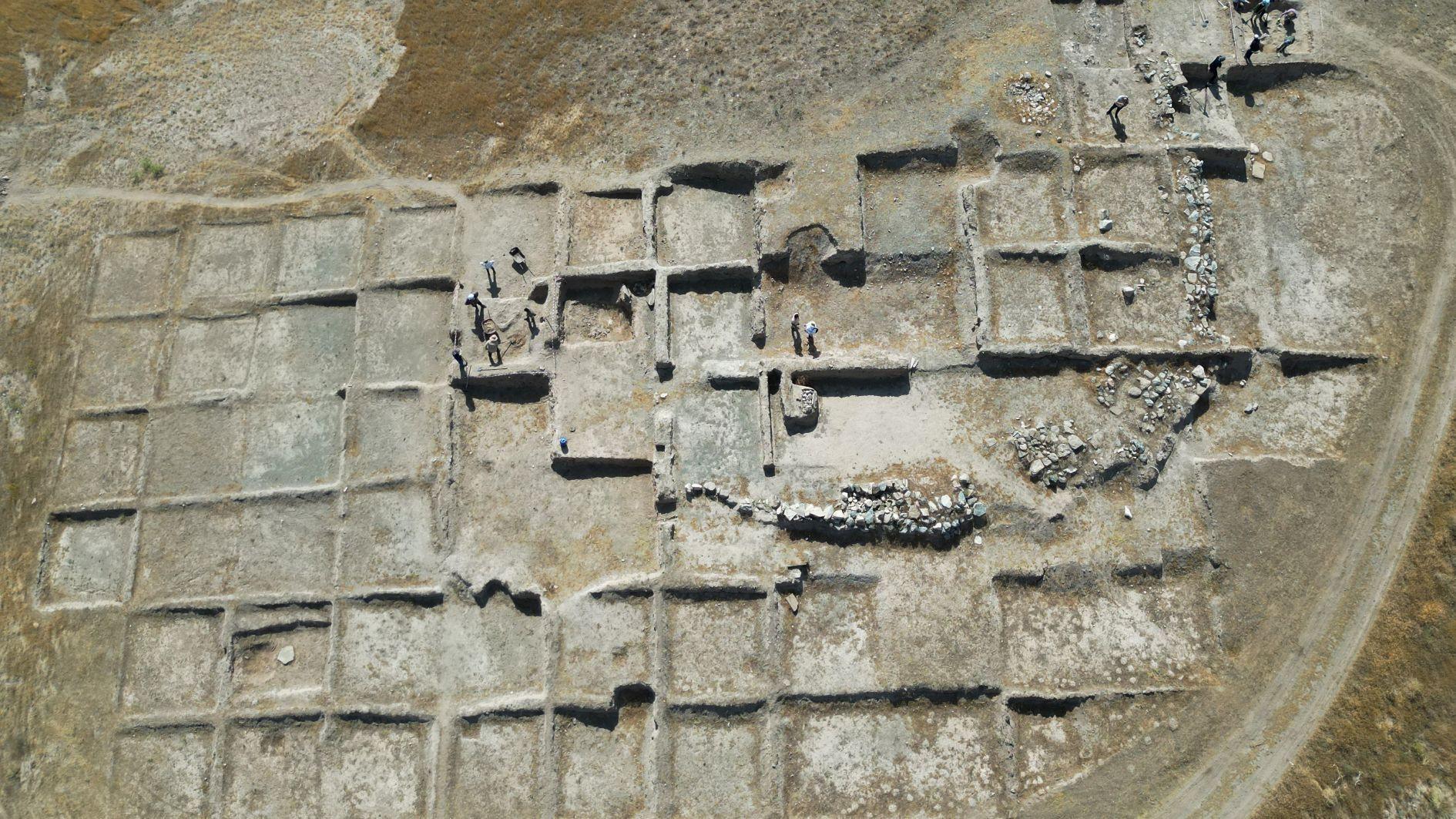
Despite the scorching sun and swirling dust, archaeologists are working tirelessly to unearth traces of the Urartians' centuries-old way of life in a necropolis near Çavuştepe Castle in the eastern province of Van’s Gürpınar district.
The burial site, identified during surface surveys nine years ago just north of the 8th-century BCE fortress built by Urartian King Sarduri II, is once again the focus of excavations permitted by the Culture and Tourism Ministry.
Led by Professor Rafet Çavuşoğlu, dean of the Faculty of Letters and head of the archaeology department at Van Yüzüncü Yıl University, the team is revealing important clues about Urartian burial customs, daily life, and the elite class believed to have governed the castle.
The excavations have uncovered human skeletons and ceramic remains thought to belong to members of the ruling class. Researchers hope the findings will offer new insights into Urartian social and economic structures, as well as their funerary traditions.
Multiple burial practices
Speaking to the state-run Anadolu Agency, Çavuşoğlu said the team has discovered a wide range of burial traditions, shedding light on the Urartians' religious tolerance and cultural diversity.
“We’ve been excavating this necropolis for nine years,” he noted. “The variety of burial practices suggests that the Urartians, particularly those who lived at Çavuştepe, were quite open-minded in their beliefs. We've documented over 50 inhumations. Some were buried alongside horses and dogs, while others, from children to young women and middle-aged adults, were cremated and placed in urn-type graves.”
One of the most intriguing discoveries, Çavuşoğlu said, was the presence of seals buried with women, an indication of their elevated status.
“The fact that women carried seals shows that they held positions of authority within the ruling class and played a decision-making role in society,” he explained. “We also found men and women buried together, which highlights the prominence of the nuclear family and suggests a monogamous social structure. Children, too, appear to have been greatly valued, as they were often adorned with elaborate jewelry.”
Each new burial brings surprises, he added. “Every burial tradition we've encountered comes with its own set of ornaments and decorative items. We expect this season’s work to yield more surprises.”
Despite the challenging conditions — intense heat, high winds and dust — Çavuşoğlu emphasized the thrill of discovery.
“This season has been extremely hot,” he said. “The area is very windy and dusty, which makes the work difficult for our team. Still, what keeps us motivated is the chance to uncover something new and evaluate it scientifically. Our ultimate aim is to learn as much as possible about the social life of past communities and share these findings with the public.”